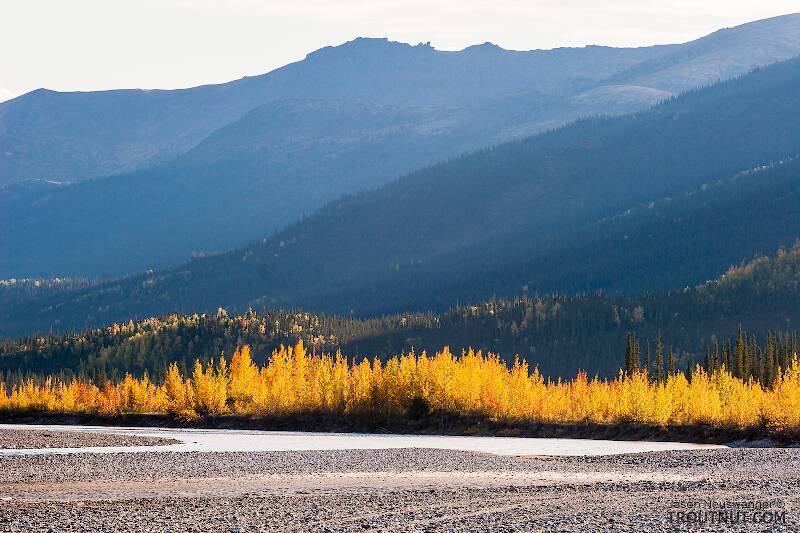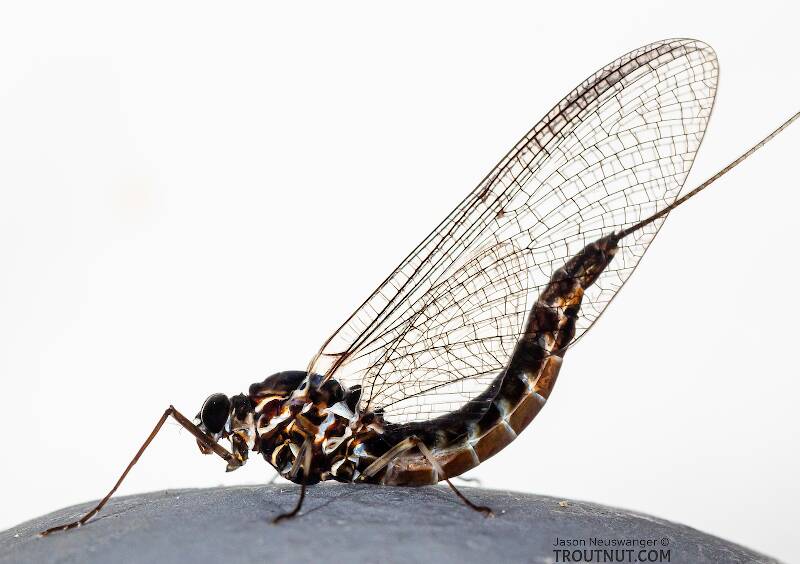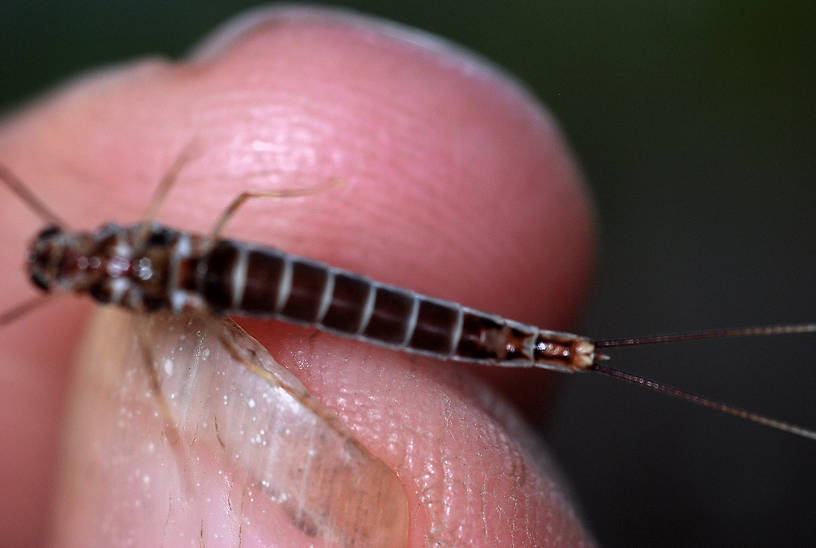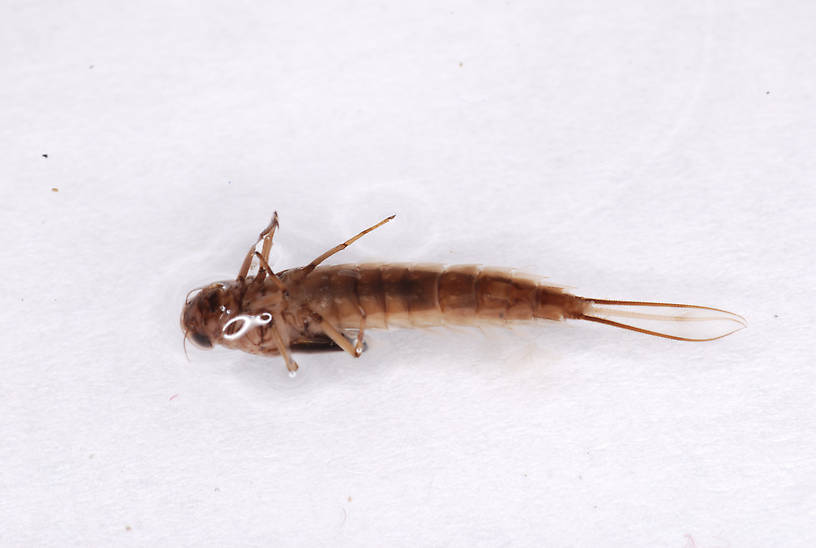
Salmonflies
Pteronarcys californica
The giant Salmonflies of the Western mountains are legendary for their proclivity to elicit consistent dry-fly action and ferocious strikes.


Mayfly Species Siphlonurus autumnalis (Gray Drakes)
Species Range
Physical description
Most physical descriptions on Troutnut are direct or slightly edited quotes from the original scientific sources describing or updating the species, although there may be errors in copying them to this website. Such descriptions aren't always definitive, because species often turn out to be more variable than the original describers observed. In some cases, only a single specimen was described! However, they are useful starting points.
Male Spinner
Wing length: 13 mm
A large dark species occurring in the late summer.
Head blackish. Pronotum deep smoky. Mesonotum dark brown, the scutellum blackish brown. Pleural sutures pale yellowish. Sternum blackish brown.
Fore leg deep blackish. Middle and hind legs dull yellowish with a smoky tinge; tarsi distinctly smoky. Wings hyaline; longitudinal and cross veins deep brown. Cross veins weak in the basal two-thirds of the costal space; in the stigmatic area heavier and strongly anastomosed.
Abdomen deep purplish brown dorsally, the pale anterior triangles tinged with yellow. Lateral margin narrowly yellowish, especially on the four apical segments. Ventrally deep purplish brown, the posterior margins narrowly yellowish. The median portion of the posterior half of sternite 9 shaded indistinctly with yellow, which extends over to the anterior margin of the forceps base. Remainder of forceps base, and forceps, deep smoky. The first joint of the forceps is rounded on its inner margin. The apical margin of the forceps base, between the forceps, is weakly excavated, and is on a level with the apex of the first joint of the forceps.
Specimens of the Mayfly Species Siphlonurus autumnalis
2 Female Spinners
1 Nymph
Start a Discussion of Siphlonurus autumnalis
References
- Needham, James G., Jay R. Traver, and Yin-Chi Hsu. 1935. The Biology of Mayflies. Comstock Publishing Company, Inc.
Mayfly Species Siphlonurus autumnalis (Gray Drakes)
Species Range
Common Names
Resources
- NatureServe
- Integrated Taxonomic Information System
- Global Biodiversity Information Facility
- Described by McDunnough (1931)




